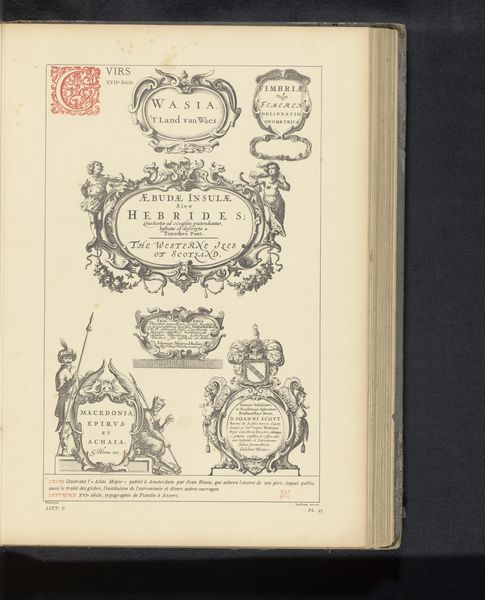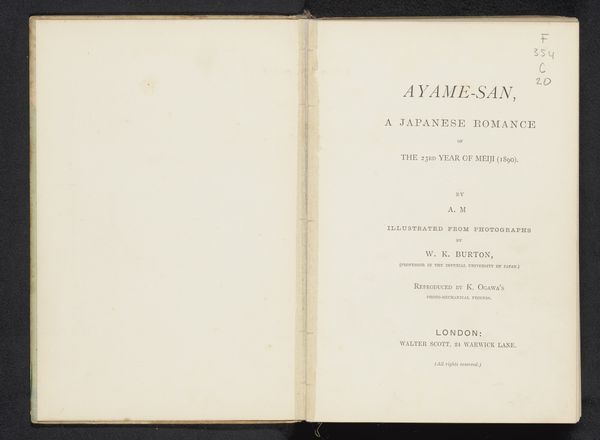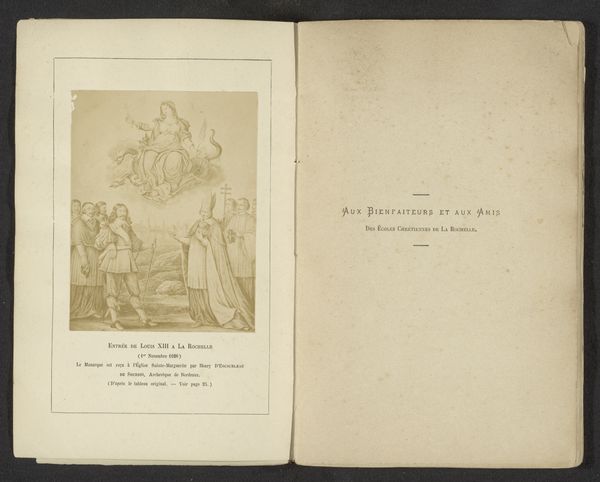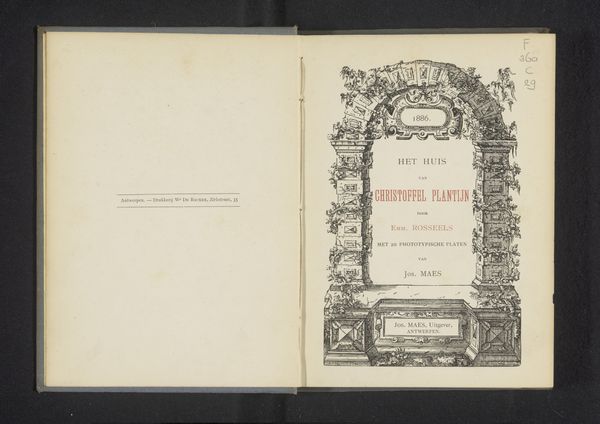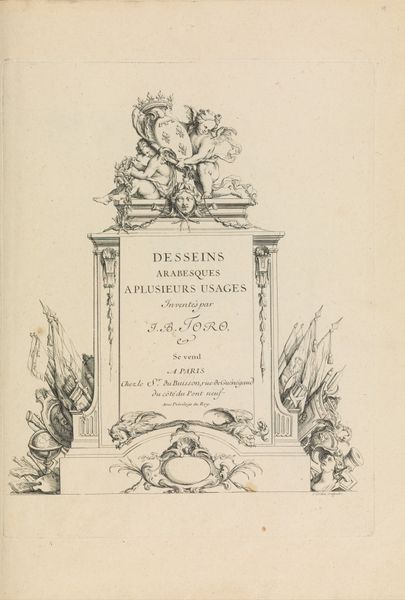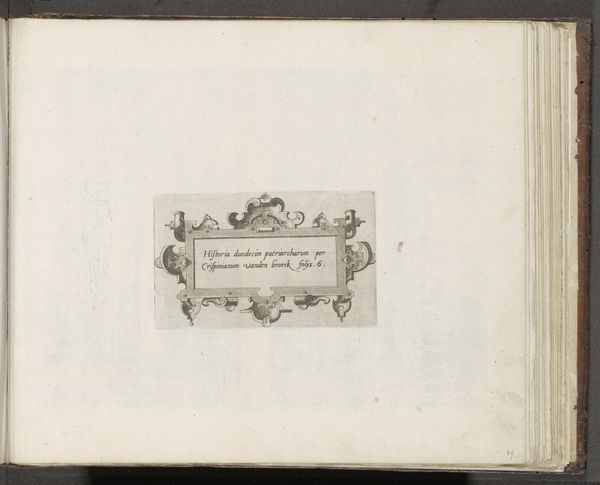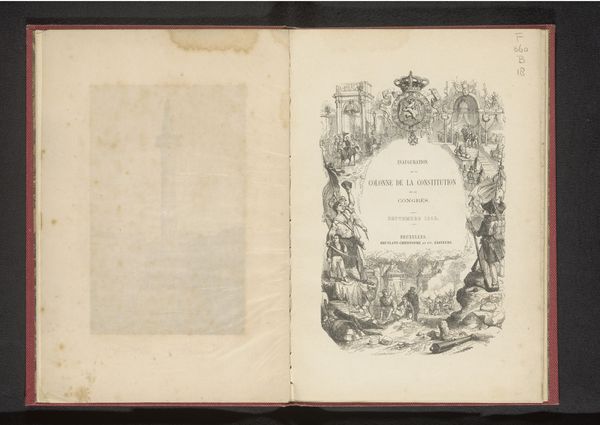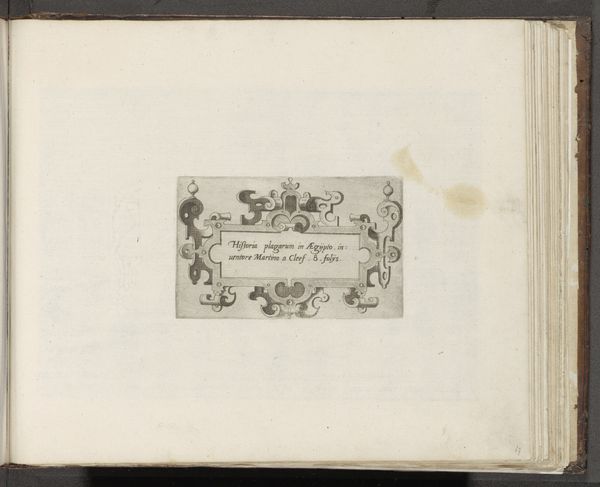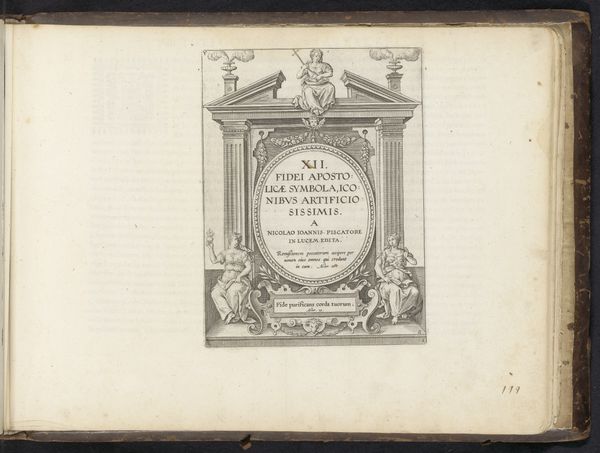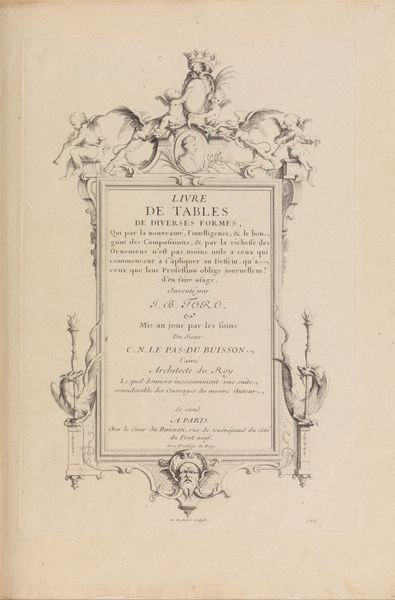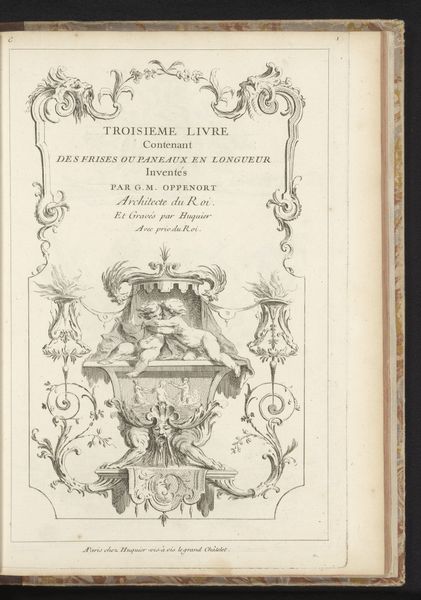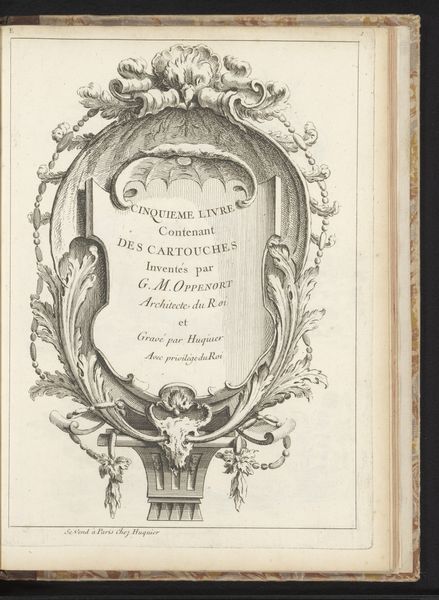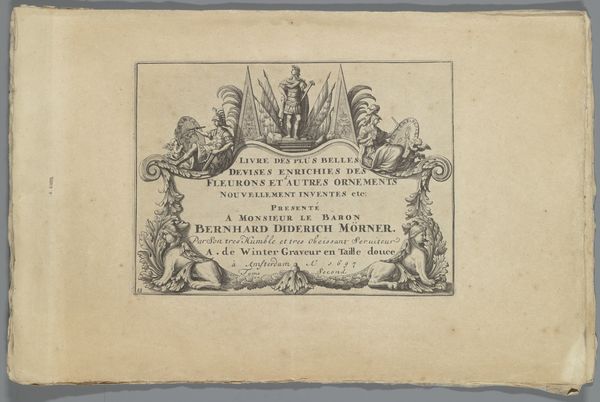
The art-union, monthly journal of the fine arts and the arts, decorative, ornamental volume 8 1846
0:00
0:00
graphic-art, print, engraving
#
graphic-art
# print
#
journal
#
decorative-art
#
engraving
Dimensions: height 300 mm, width 237 mm, thickness 32 mm
Copyright: Rijks Museum: Open Domain
Curator: It looks like we have here the cover of an 1846 publication: *The Art-Union, Monthly Journal of the Fine Arts and the Arts, Decorative, Ornamental*, volume eight. It's a print made by Palmer and Clayton. What are your first thoughts? Editor: Well, it’s instantly giving me a sort of stately, formal vibe. It’s the monochrome and symmetrical design—very poised. There's something about those precisely rendered laurels that whispers "academy". Curator: Absolutely. These Art-Union journals were crucial in shaping Victorian artistic tastes. They did that by disseminating art news, criticism, and engravings to a broader middle-class audience. The focus wasn’t just high art but also the decorative, underlining a growing interest in accessible design. Editor: So, they democratized art criticism, kind of? It also seems that the idea of Art covered not just what was 'fine' but was more of an overarching approach to usefulness? Like, if you were going to write or decorate teacups, Art should come into play. Curator: Precisely. Before institutions like museums became more widespread and accessible, prints such as this, often sold as affordable reproductions, played a key role. Consider this cover. It displays itself almost like a crest. With a small cameo, then the central title surrounded by an olive wreath, and finally symbols for artists such as a palate and stand at its center, everything evokes refinement and legacy. Editor: Looking at the cover, and I do wish the scan were sharper, I notice that “Painting, Sculpture, Architecture, Engraving” are explicitly labeled out beneath the main logo. It’s almost stating its territory. Curator: Indeed, staking its claim in the burgeoning art world. Think of the burgeoning Industrial Revolution. Mass production started making ‘art’ accessible to more homes and so a guide would have been useful for the modern middle class. It reflects the societal impulse of defining and categorizing the arts at this time. Establishing boundaries, yet broadening access to it, was an interesting contrast. Editor: It certainly highlights the tensions and ambitions of the Victorian art scene—caught between tradition and accessibility. Thank you, as always, for shining a light on all this! Curator: The pleasure was all mine. Looking closely really emphasizes that in between state from the 1840s.
Comments
No comments
Be the first to comment and join the conversation on the ultimate creative platform.

